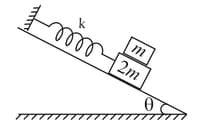Embibe Experts Solutions for Chapter: Oscillations, Exercise 1: Level 1
Embibe Experts Physics Solutions for Exercise - Embibe Experts Solutions for Chapter: Oscillations, Exercise 1: Level 1
Attempt the practice questions on Chapter 11: Oscillations, Exercise 1: Level 1 with hints and solutions to strengthen your understanding. Physics Crash Course JEE Main solutions are prepared by Experienced Embibe Experts.
Questions from Embibe Experts Solutions for Chapter: Oscillations, Exercise 1: Level 1 with Hints & Solutions
Find the time period of a particle executing simple harmonic motion in second, if it is known that the potential energy changes from maximum to minimum in .
A body is executing S.H.M. Its potential energy is and at displacements and respectively. The potential energy at displacement is
The displacement equations for two waves undergoing superposition are, respectively, and . The amplitude of the resultant wave is,
Energy of particle executing depends upon
The magnitude of average acceleration in half time period from equilibrium position in a simple harmonic motion is,
The coefficient of friction between block of mass and is . There is no friction between a block of mass and inclined plane. The maximum amplitude of two block system for which there is no relative motion between both the blocks-

The displacement of a particle is given by, . The motion is,
The time period of oscillation of a simple pendulum having length and mass of the bob is given as . If the length of the pendulum is increased to and the mass of the bob is increased to , then which one of the following is the new time period of oscillation?
